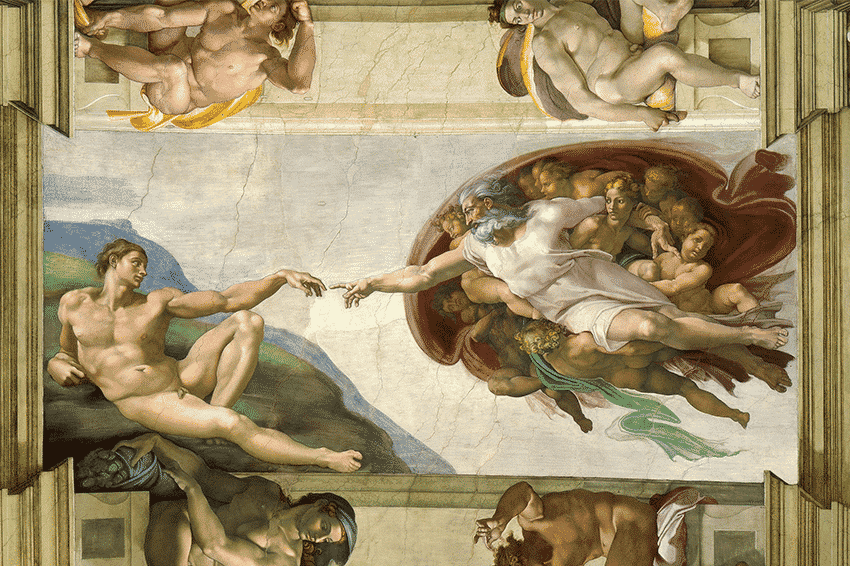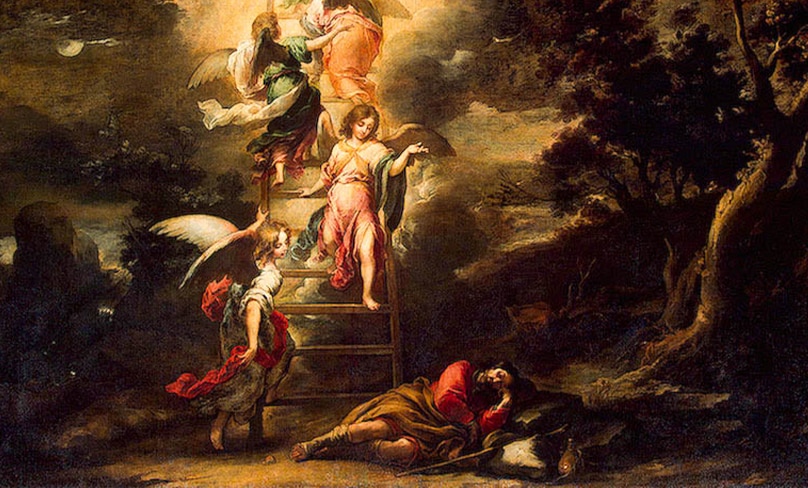
By Fr Yuhanna Azize
God created the world, and His creation bears the trace of His work (Psalm 19:1).
Syriac and Maronite spirituality looks on the world not as divine, but as a shadow from the divine light of God. The world reflects the pattern of heaven on earth. This is the basis of the theology we call “typology.”
According to the ancient Semitic way of thinking, the universe was created according to a divine plan. Then, in His life on earth, Christ revealed that the universe had been created through Himself, and that he and his actions were the centre of human history. This is but one aspect of the magnificent opening of St John’s Gospel.
When Our Lord applies Old Testament teachings and stories to Himself, His thought is typological. For example, He says: “you will see heaven opened and the angels of God ascending and descending upon the Son of Man” (John 1:51).
Here, He mystically teaches that He Himself actually is the ladder or staircase which Jacob saw (Genesis 28). This is another unique aspect of Semitic typology, that the antitype (the ladder) shares in the being and reality of the type (Jesus).
“Call no one on earth your father; you have but one Father in heaven. Do not be called ‘Master’; you have but one master, the Messiah”
The centre of all human history and all human society is found in Our Lord Jesus Christ, the sacraments, the Holy Family of Nazareth, and the community of the first Christians.
Not only the Old Testament, but all of history – irrespective of when it happened – takes its meaning from the Incarnation. Thus, our human families should be modelled on the Holy Family in order to achieve their greatest possibilities.
All our actions, even our political, economic, and social choices, should be influenced by our desire to be united with God.
Although Jesus never speaks philosophically or of typology, He does express typology when He says: “Call no one on earth your father; you have but one Father in heaven. Do not be called ‘Master’; you have but one master, the Messiah” (Matthew 23:10).
Now, other writers do speak specifically of typology, see 1 Peter 3:18-22 where baptism and the flood of Noah are related as type and antitype, and the Epistle to the Hebrews on priesthood.

Consider the words of Genesis 1:26-27, “And He said: Let us make man to our image and likeness… And God created man to his own image: to the image of God He created him: male and female He created them.” The “image and likeness” of God are the pattern (type) by which we were created. But the fullness of what this means was revealed only through the Incarnation of Jesus.
In the Apocalypse, St John reveals a vision of how, when we are saved and enter the Kingdom of Heaven, His name, which is the very essence of His image, is placed upon us: “the slaves of God shall worship Him, they shall look upon His face, and His name shall be upon their foreheads” (Revelation 22:3-4).
This teaching, which opens and closes the Bible, is the key to the creation and the renewal of the creation of humanity.
When the original state of humanity described in the Book of Genesis is renewed and fulfilled, as described in the Apocalypse, the original image of humanity is renewed and made perfect: it is restored to its type. In the Anaphora of St John, from the Maronite liturgy, in the prayer before the Institution Narrative, the priest prays:
You are holy, O God the Father, with your only Son and your Holy Spirit, one and indivisible in nature, and you sanctify all things by your divine power.
“According to the ancient Semitic way of thinking, the universe was created according to a divine plan. Then, in His life on earth, Christ revealed that the universe had been created through Himself, and that he and his actions were the centre of human history.”
For our salvation you sent your Son into the world; he descended, became flesh, suffered, and was crucified for us, who had distorted his image.
This shows, by means of the typology of the image of God, how the divine plan is fulfilled through the Holy Trinity, which fills the world with its grace, and by the saving action of the Son.
As the Liturgy builds up to the Institution Narrative, our attention is concentrated on the role of Christ, who descended and accomplished everything so that we who “had distorted his image” could be saved. It is implied that His work restores the distorted image.
The logic of typology does not end there: as we are made in the image of God, so too is Christ, but he is the perfect image. At the consummation of the age, Christ will be all in all. This is the key to the meaning of the passage in Colossians 1:15-20.
There are also ethical dimensions to typology. Perhaps we can explore these in the future.
Fr Yuhanna Azize is a priest of the Maronite Eparchy of Australia New Zealand and Oceania
